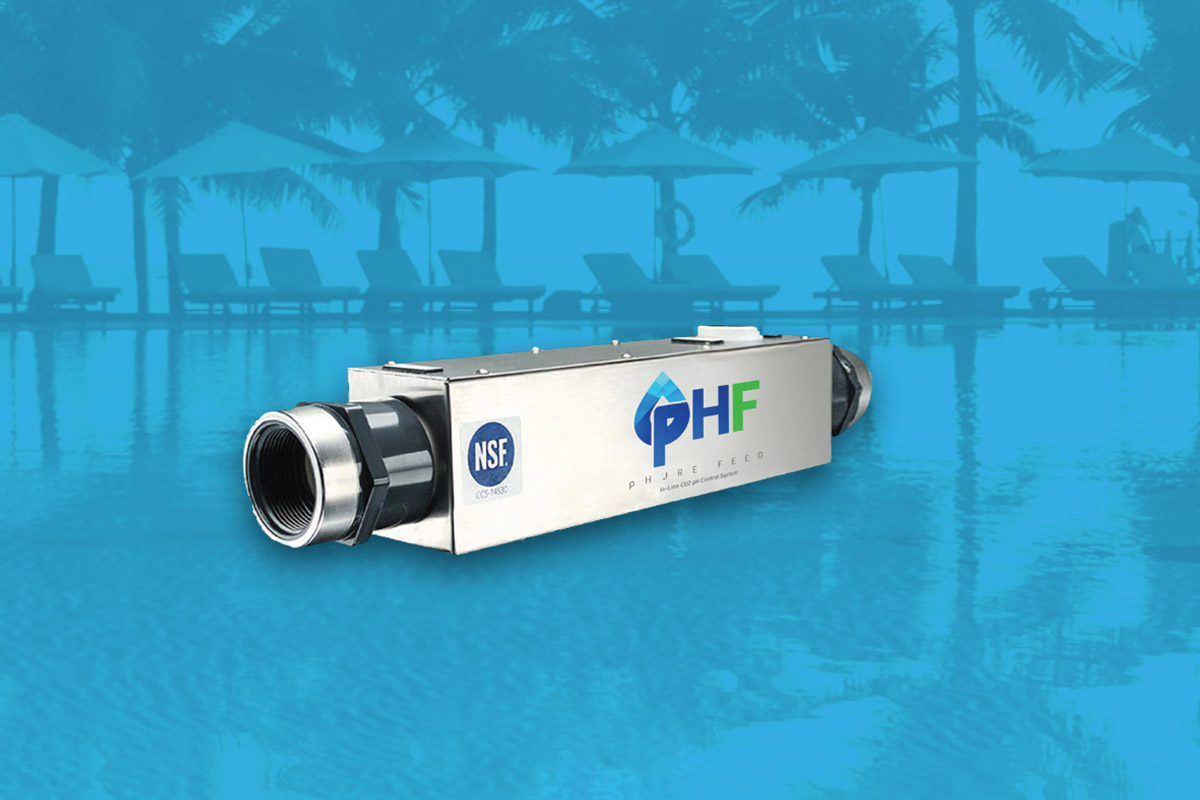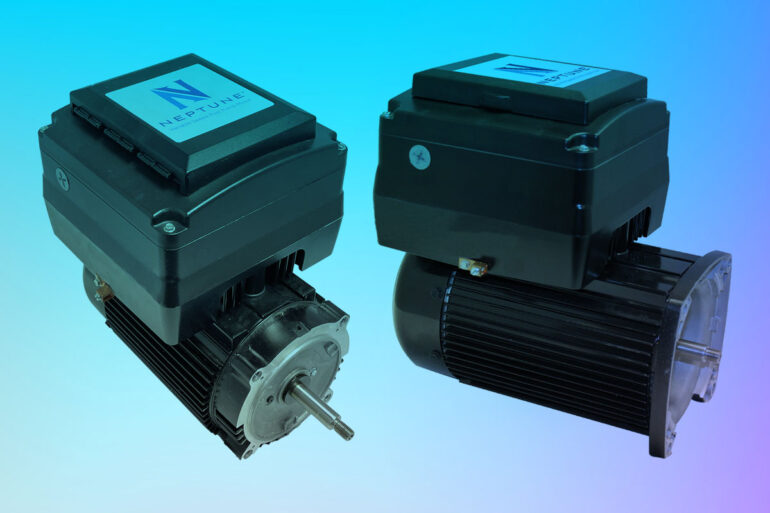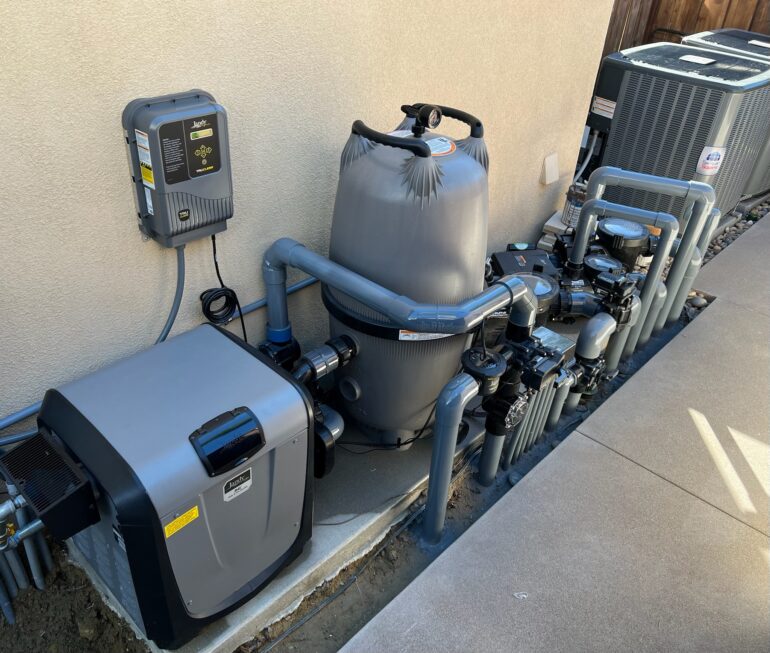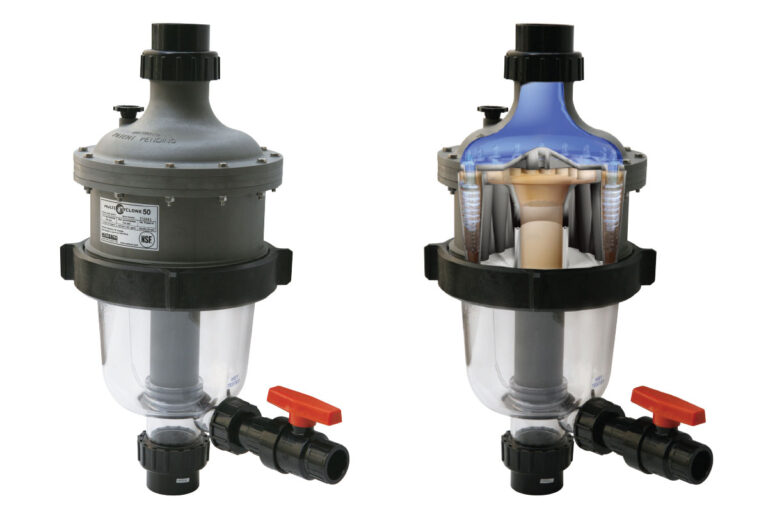Using CO2 to Manage pH

When it comes to pool maintenance, keeping the water balanced is vital for both safety and enjoyment. Traditionally, acid has been the go-to solution for managing pH levels, but there is another effective method: carbon dioxide, or CO2.
Advantages of CO2
CO2 can maintain water quality without significantly altering its chemical composition. Which is why Michael Geyer, president of Exceptional Water Systems in Mesa, Arizona, made the switch.
“We went to using CO2 because it is a natural element and doesn’t change the chemistry in the water,” Geyer says. “It’s much milder. And it doesn’t drive the alkalinity down and make the water more acidic.”
Using acid can lead to a cycle of adding and adjusting chemicals, creating a snowball effect. Acidic water often falls outside of the recommended Langelier Saturation Index range, necessitating the addition of sodium bicarbonate to restore alkalinity. However, this in turn raises the pH, requiring more acid, and so on.
“When you add more acid, it drops your alkalinity and it drops your pH again, which is counterproductive,” Geyer says. “It’s just this vicious cycle you go through daily, which then adds to more buildup of [total dissolved solids] in the water, and of course, a bigger expense.”
How CO2 works
CO2 offers a more efficient way to manage pH without drastic changes in alkalinity. When CO2 is dissolved in water, it forms carbonic acid, which lowers the pH without significantly affecting alkalinity levels.
“If I were a commercial pool operator, I would absolutely use it,” says Eric Knight, director of sales and marketing at Orenda Technologies. “I would save big time on chemicals long term, but you have to know how to use it. It’s not the same as acid.”
Advances in CO2 application
Historically, CO2 has been seen as expensive due to the need for larger quantities and longer feeding times when dispersed through large bubbles. However, recent advancements have made CO2 application more efficient. Geyer’s company, for example, employs a nanotechnology that diffuses CO2 into water as fine bubbles, making it more effective.
“It’s more like a fog,” he says. “It’s more effective because it drops the pH quickly. So now running CO2 is [more cost-effective] because you use probably a half to a third that you would use normally.”
CO2 in commercial vs. residential pools
CO2 is most common in large commercial facilities because of the initial installation cost and space requirements.
“It’s more expensive to install; [the tanks] are pretty robust,” Knight says. “You have to store the CO2 in a well-ventilated area or outside. But when it comes to universities and water parks and bigger venues, CO2 is very common.”
CO2 does have its drawbacks, particularly for smaller, residential pools. For instance, it serves as a nutrient for algae, requiring careful management of CYA levels to prevent algal blooms, Knight cautions.
Nevertheless, some companies, like Geyer’s, offer CO2 to all their residential customers as part of a broader focus on using less chemical-intensive methods.
“We focus on healthy water without [chemicals], so we use oxygen, ozone and CO2 for balancing,” Geyer says.
We focus on healthy water without [chemicals], so we use oxygen, ozone and CO2 for balancing.”
Michael Geyer, Exceptional Water Systems
Considerations and challenges
One major consideration when using CO2 is the application. Without an effective diffusion system, CO2 can quickly escape from the water, rendering it less effective and increasing costs.
“[Without a good diffusing system], you blow through a lot of it relatively fast,” Geyer says. “Even though it’s a great product, [you’ll have a] hard time getting it to stay in solution and be beneficial to the water.”
Geographical and logistical factors can also impact the viability of CO2 for pool maintenance. For service providers interested in using CO2, particularly in residential settings, it is important to find a local supplier that can reliably deliver the product.
“The biggest drawback from people wanting to use CO2 is cost efficiency,” Geyer says. “I do not recommend using CO2 if you do not have an efficient way of delivering it.”
Industry perspectives
Amy Bruecks, president of compressed gas supplier City Carbonic in Oklahoma City, Oklahoma, emphasizes the importance of storage and delivery logistics. Her company delivers CO2 to both commercial and residential customers, though pools represent a small percentage of its overall business.
“CO2 can either be stored in large bulk tanks or in cylinders,” she says. “Bulk CO2 has to be delivered in our trucks to the customer facility. Cylinders can either be delivered to the facility or picked up at most CO2 gas suppliers.”
Despite the challenges, CO2 is seen as a valuable tool for pool maintenance. Steven McKendrick, a sales representative for Chart Industries — the bulk tank supplier for City Carbonic — highlights the long-term cost benefits and environmental advantages.
“While the initial cost to install the controls for CO2 is a bit high, the return is quick,” he says. “CO2 is much less expensive as a buffer than acid. It is also less hazardous to your health and much more environmentally friendly.”
Exceptional Water Systems also emphasizes the environmental benefits.
“We look at not just the treatment of the water but where the water goes afterward,” Geyer says. “By using CO2, when I’m draining a pool or backwashing, I don’t have to worry about the shrubbery or brush or where it’s going into the water system, even down to the wastewater treatment facilities.”






